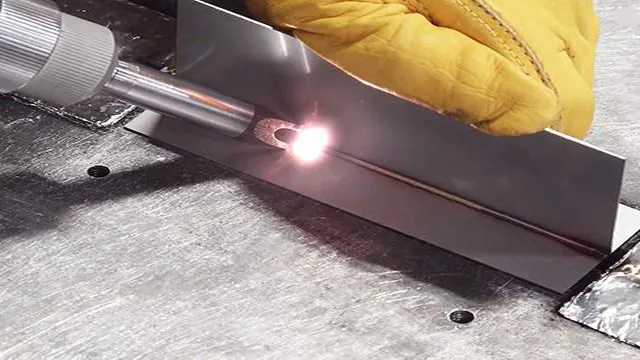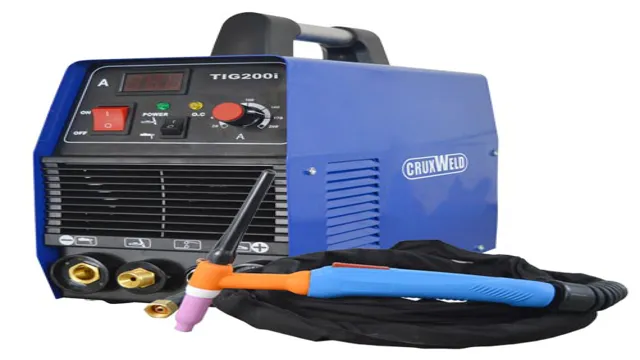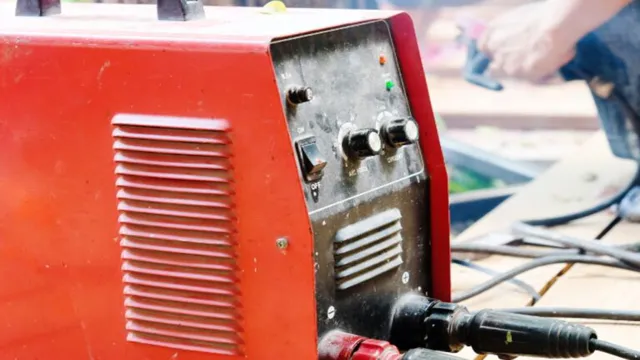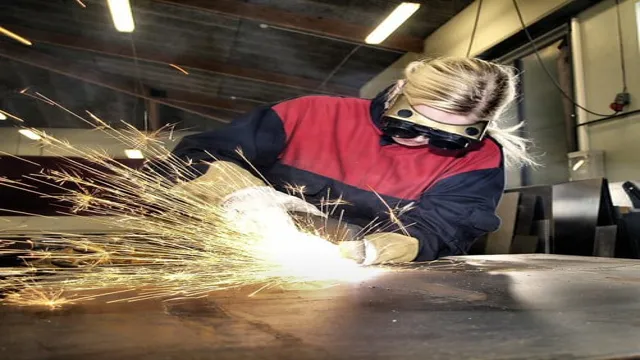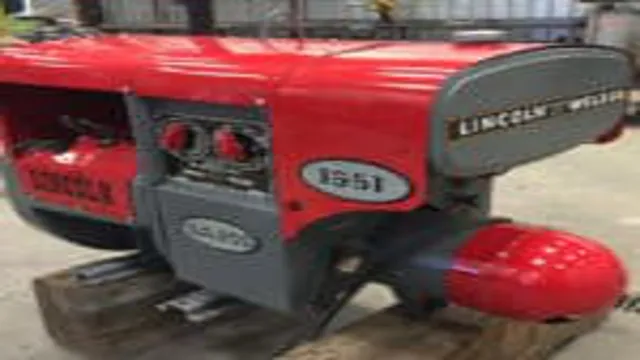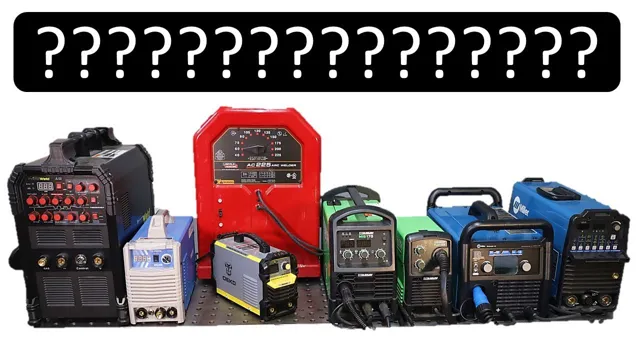When Was the First Welding Machine Made and Its Impact on Industrial Revolution
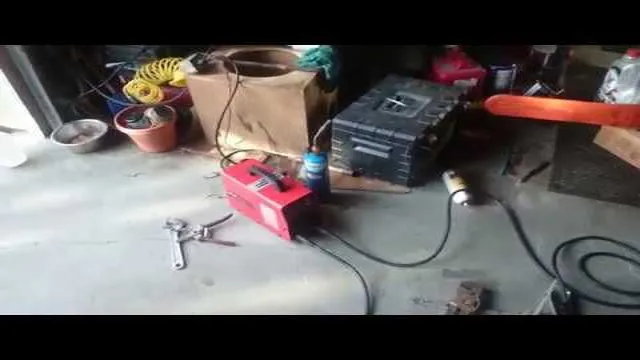
Have you ever wondered about the history behind welding machines? The art of welding has been around for thousands of years, but it wasn’t until the Industrial Revolution of the 19th century that welding machines as we know them today were developed. Welding revolutionized manufacturing, making it possible to join metals and alloys in a way that was stronger and more reliable than ever before. From the early arc welders of the late 1800s to the high-tech laser welding machines of today, the evolution of welding machines has been fascinating.
Throughout history, welding has played a critical role in shaping the world as we know it. In this blog post, we’ll take a closer look at the history of welding machines and how they’ve evolved over time, from the first manual welding techniques to the automated and highly advanced machinery of today. Let’s dive in!
Early Forms of Welding
When was the first welding machine made? Welding has been around for centuries, with early forms of welding dating back to the Bronze Age. However, the first welding machine wasn’t developed until the late 19th century. In 1881, a Russian named Nikolai Benardos invented an arc welding process that involved carbon electrodes.
This method was later improved upon by another Russian named Stanislaw Olszewski, who developed an electric arc welding method that utilized metal electrodes. However, it wasn’t until the early 20th century that welding machines became widely used. In 1919, C.
L. Coffin developed a method known as “shielded metal arc welding,” which used a flux-coated electrode to protect the weld from contamination. This method proved to be very popular, and it’s still used today in many applications.
Since then, there have been numerous advancements in welding technology, from gas tungsten arc welding to laser welding. However, it’s clear that the early forms of welding played an important role in shaping the industry into what it is today.
Forge Welding
Forge welding is a method of joining pieces of metal by heating them until they are white hot and then hammering them together. This technique has been used for centuries, and it was one of the earliest forms of welding. Forge welding was popular among blacksmiths and metalworkers in ancient times because it allowed them to create strong, durable, and intricate metal pieces.
The process involves heating two pieces of metal until they are malleable enough to be hammered together, then applying pressure to fuse them into one solid piece. This method was used to craft everything from armor and weapons to horseshoes and industrial machinery. The process of forge welding requires a good deal of skill and patience, but the results are worth the effort.
Today, forge welding is still used in some traditional craft practices, such as sword-making, but has largely been replaced by more modern welding techniques.
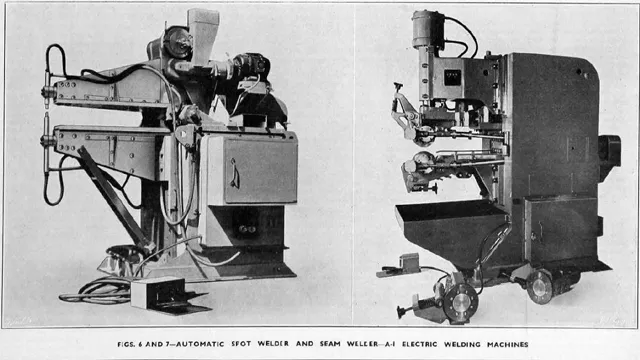
Resistance Welding
Resistance welding has been around for quite some time, and its roots can be traced back to the early forms of welding. One of the earliest forms of welding was forge welding, which involved heating up two metals and hammering them together until they merged. Another method was oxyacetylene welding, which was developed in the late 1800s.
This method involved using a torch to heat up the metals and then feeding a filler material into the weld to create a bond. However, these methods were not as efficient as resistance welding, which was first developed in the early 1900s. Resistance welding involves passing an electric current through two metals, causing them to heat up and creating a bond.
This method quickly gained popularity because it was faster and produced stronger bonds than previous methods. Today, resistance welding is used in various industries, including automotive manufacturing, aerospace, and electronics.
The Invention of the Arc Welder
When was the first welding machine made? Believe it or not, the concept of welding has been around since the Bronze Age! However, it wasn’t until the late 1800s when electric arc welding was invented. The first welding machine was created in 1881 by Nikolai Benardos and Stanislaw Olszewski, who used carbon electrodes to create an electric arc in order to join metal. This method was not widely used until around the turn of the 20th century when advancements in technology allowed for the creation of more portable and efficient equipment.
Then in 1919, the first welding generator was created, which used gasoline to power the welding process. Over time, welding technology continued to improve, leading to the development of various welding techniques, including gas tungsten arc welding (GTAW), or TIG welding, and shielded metal arc welding, also known as stick welding. Today, welding is an essential tool in numerous industries, from construction to manufacturing, and continues to improve with the latest advancements in technology.
Nikolai Slavyanov’s Contribution
Nikolai Slavyanov’s contribution to the invention of the arc welder was significant and lasting. He was a Russian engineer who developed the first arc welding method in 188 This method used an electric arc to melt metals together to form a bond.
Slavyanov’s invention was a breakthrough in welding technology and is still used today. The arc welding process is used in a variety of industries, from construction to shipbuilding. It is an essential skill for welders to learn and is vital in the production of many consumer goods.
Slavyanov’s innovation changed the entire welding industry and paved the way for modern welding techniques. Without his contribution and the arc welding process, many of the products we use today would not exist.
The First Practical Arc Welding Machine
The first practical arc welding machine was a game-changer in the welding industry. This invention made welding easier, faster, and more efficient. It was developed by C.
L Coffin in 1890 and used an electric current to create an arc between the welding material and the electrode. This resulted in a high-temperature welding process that made it possible to join different types of metals. The arc welder was a significant improvement from the previous welding techniques and it paved the way for the development of modern welding procedures.
Today, arc welding is still one of the most widely used welding methods that are employed in many different industries. The arc welding technology is constantly evolving, and new developments will continue to bring significant benefits for welders around the world.
The Advancements in Welding Technology
The invention of the arc welder was a significant breakthrough in the field of welding technology. Before its development, welding was a slow and tedious process with limited capabilities. The arc welder revolutionized the industry by introducing a more efficient and powerful technique that made welding much faster.
The arc welder works by using an electric arc to heat and melt the metals to be joined, creating a highly concentrated heat source that allows for a clean and precise weld. This technology allowed for the welding of much thicker metals and greatly improved the structural integrity of welded joints. With the help of modern arc welding equipment like MIG and TIG, welding has become more accessible and efficient to achieve high-quality welds in a range of materials.
The invention of the arc welder is undoubtedly one of the most significant achievements in the history of welding. Its impact and benefits can still be seen in various industries today, from manufacturing and construction to transportation and aerospace.
Conclusion
And there we have it! The all-important question of when the first welding machine was made has been answered. It seems that this fascinating tool has been around for a lot longer than we might have suspected, and we owe a debt of gratitude to those early blacksmiths who first discovered the wonder of welding. Who knows what technological marvels the future has in store for us, but for now, let’s take a moment to appreciate the humble welding machine and all it has done to shape our world.
“
FAQs
What is welding?
Welding is a process of joining two or more pieces of metal by melting the surfaces to be joined and then allowing them to cool and solidify, thus forming a permanent bond.
Who invented the first welding machine?
The first welding machine was invented by Elihu Thomson in 1885.
What was the first welding machine used for?
The first welding machine was used for welding lead plates used in battery production.
How has welding technology evolved since the invention of the first welding machine?
Welding technology has evolved significantly, with new methods and equipment, such as gas welding, arc welding, and laser welding, becoming widely used in industrial applications.
What are the different types of welding techniques?
The most common welding techniques are gas welding, arc welding, resistance welding, and laser welding.
What safety precautions should be taken when welding?
Safety precautions when welding include using proper eye and face protection, wearing fire resistant clothing, ensuring proper ventilation, and avoiding flammable materials in the work area.
What does the future of welding technology look like?
The future of welding technology looks bright, with advancements such as robotic welding, 3D printing, and innovative welding techniques being developed to increase precision, speed, and safety in welding.

